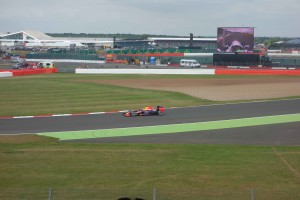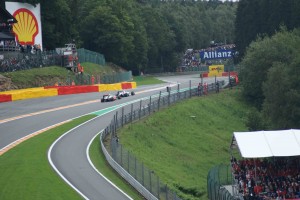Actually, it’s what I learnt two years ago…!
As you may know, my next book is due out on Kindle in the next few weeks. The hero is Aiden Foster, an outwardly cocky, fabulously sexy racing driver. The trouble with picking professions for a hero or heroine is you have to know a bit about what they do, so that in between the action you’ve planned (and the falling in love…) they have something to do.
So to whet your appetite for Aiden, I thought I’d share with you some of the most interesting facts I found about motor racing – in particular about Formula one.
- With over twenty races in a season, the drivers and those closely involved in the racing spend nearly a third of their weekends working. And actually, considering the need to travel, set up and practice, the weekends start on a Wednesday.
- On average around 100 people travel from the team’s headquarters to the grand prix. Making sure both they and the cars, spare engines, chassis etc arrive in the right place at the right time is quite a logistical feat. I have trouble getting my sons to school on time.
- Formula one drivers are some of the most highly conditioned athletes around. The physical endurance they experience during a race is likened to that of running a marathon.
- When they corner, drivers experience forces of up to four times their own weight. Fighter pilots may experience more g-force (around 8, compared to 4) but only in one direction, aligned with the spine. Racing drivers experience forces at right angles to the spine. So drivers need to have particularly strong necks (supporting their head and helmet) and arms (controlling the car).
- In terms of the effect on their necks, they are said to experience three or four car crashes every lap!
- Drivers have to be physically fit to cope with the extreme heat in the cock-pit – it can reach up to 50 degrees centigrade. They can sweat off anything up to 3kg of their body weight during the course of a race.
- During a race a driver’s heart rate can get up to around 200 beats per minute. On average it settles at 150 – for the whole race.
So, definitely not just a gorgeous face 🙂
http://auto.howstuffworks.com/auto-racing/motorsports/formula-one
http://www.telegraph.co.uk/motoring/motorsport/7681665/Formula-One-drivers-feel-the-G-force
http://www.carvaluation.com/blog/f1-technical
Formula one for dummies.


